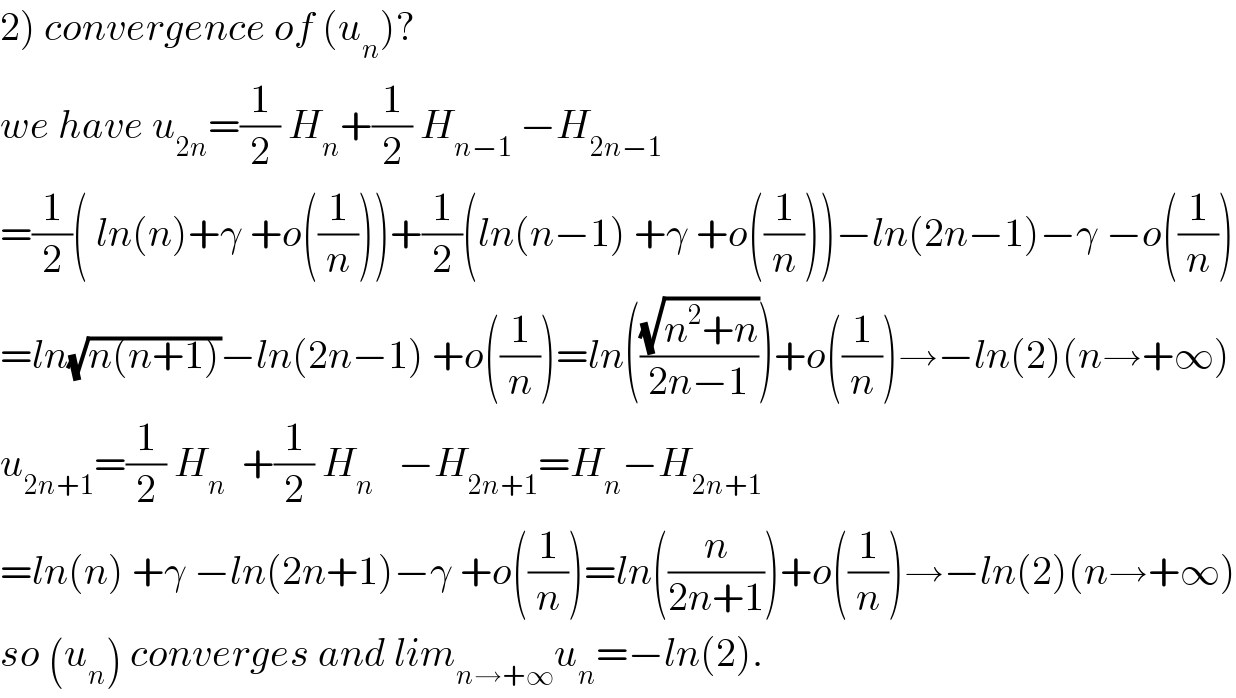
Question and Answers Forum
Previous in Relation and Functions Next in Relation and Functions
Question Number 45792 by maxmathsup by imad last updated on 16/Oct/18
![let u_n =Σ_(k=1) ^n (((−1)^([k]) )/k) and H_n =Σ_(k=1) ^n (1/k) 1)calculate u_n interms of H_n 2)study the convergence of (u_n ) 3)study theconvergence of Σ u_(n.)](Q45792.png)
Commented by maxmathsup by imad last updated on 17/Oct/18

Commented by maxmathsup by imad last updated on 17/Oct/18

Commented by maxmathsup by imad last updated on 17/Oct/18
![we have u_n =Σ_(k=1) ^n (((−1)^([k]) )/k) ⇒u_n =Σ_(p=1) ^([(n/2)]) (1/(2p)) −Σ_(p=0) ^([((n−1)/2)]) (1/(2p+1)) but Σ_(p=1) ^([(n/2)]) (1/(2p)) =(1/2) H_([(n/2)]) Σ_(p=0) ^([((n−1)/2)]) (1/(2p+1)) =1 +(1/3) +(1/5) +....+(1/(2[((n−1)/2)]+1)) =1+(1/2) +(1/3) +(1/4) +.....+(1/(2[((n−1)/2)])) +(1/(2[((n−1)/2)]+1)) −(1/2)(1+(1/2) +....+(1/(2[((n−1)/2)]))) =H_(2[((n−1)/2)]+1) −(1/2) H_([((n−1)/2)]) ⇒ u_n =(1/2) H_([(n/2)]) +(1/2) H_([((n−1)/2)]) − H_(2[((n−1)/2)]+1)](Q45872.png)
Answered by arcana last updated on 17/Oct/18

Commented by maxmathsup by imad last updated on 17/Oct/18

Answered by arcana last updated on 17/Oct/18

